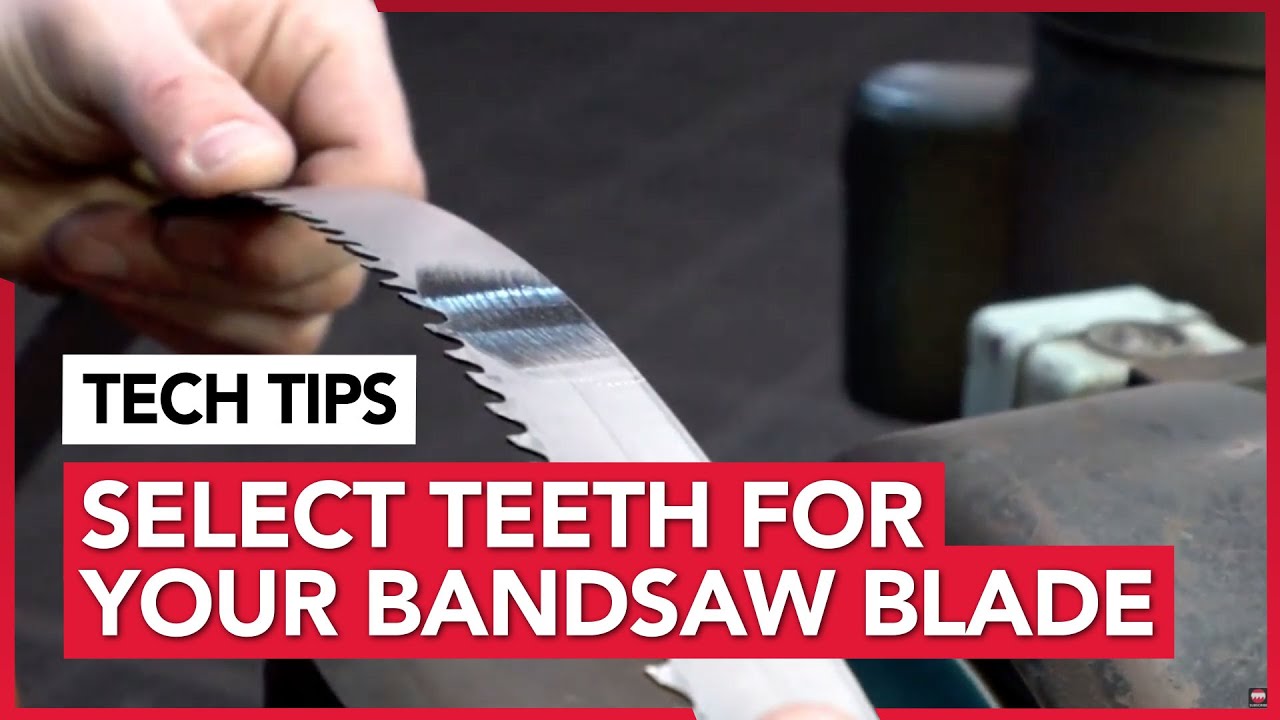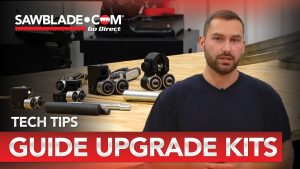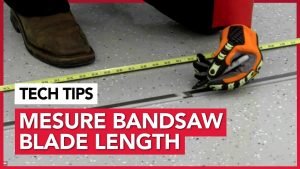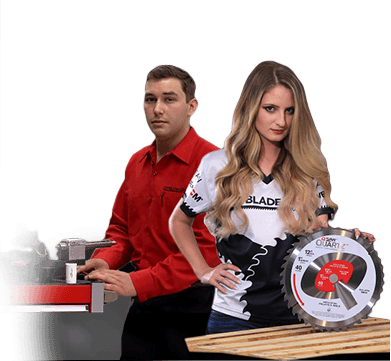Working with a bandsaw can be a rewarding experience, particularly when you have the perfect blade for the job. However, many beginners and even some seasoned operators may find it challenging to select the correct bandsaw blade teeth. Making this choice requires an understanding of the material to be cut, the appropriate tooth pitch, gullet size, and blade rigidity, among other things. Let’s delve into how you can make this decision more confidently and efficiently.
Understanding Bandsaw Blade Anatomy
Before we explore how to select bandsaw blade teeth, it’s important to understand the anatomy of a bandsaw blade. A blade is more than just a continuous loop of metal with teeth – it is a complex tool engineered to perform specific types of cuts. Bandsaw blades are typically constructed of carbon steel or bimetal, with a variety of tooth configurations.
The most essential parts of a bandsaw blade include the teeth, gullets, and back. The teeth do the actual cutting, and their number per inch (TPI), shape, and arrangement will affect the cut’s quality and speed. The gullets are the spaces between the teeth, responsible for carrying away the chips produced during cutting. Finally, the back of the blade, often spring-tempered for strength, helps improve rigidity for straighter, more accurate cuts.
For a deeper understanding of bandsaw blade anatomy and how each component impacts cutting performance, refer to this article on how bandsaw blades are welded.
Choosing Bandsaw Blade Teeth: Metal Vs. Wood
One of the first considerations when choosing a bandsaw blade is the material you plan to cut. Different materials require different types of blade teeth to ensure efficient, clean cuts.
For cutting metals such as steel, a metal cutting band saw blade is an excellent choice. These blades typically have a progressive positive rake tooth pattern designed to reduce noise, vibration, and chatter, giving you a quieter sawing operation and extending blade life. This results in a lower cost per cut. A popular choice for cutting a variety of steel shapes and sizes is the Q501 IC band, known for its versatility.
On the other hand, if you’re dealing with wood or plastic, a wood cutting band saw blade would be more suitable. These blades have a precision ground tooth and layered heat treated tooth pattern designed to give you extended blade life. The Q Series Carbon Band Saw Blades are available in both Flex back Carbon and Hard Back Carbon steel, providing economical quality blades for a range of applications.
Remember that the length of your bandsaw blade also matters. Here is a handy guide on how to measure the length of a bandsaw blade to ensure the perfect fit for your machine.
Tooth Pitch and Gullet Size: The Key Factors
Tooth pitch and gullet size are two of the most crucial factors to consider when selecting bandsaw blade teeth. Tooth pitch refers to the number of teeth per inch (TPI) on the blade. For thinner and smaller materials, a fine tooth pitch is typically more suitable. On the other hand, thicker and larger materials call for a coarser tooth pitch.
Gullet size also plays a significant role in effective chip removal. Larger gullets are generally better suited to softer, more malleable materials like wood or plastic, while smaller gullets are ideal for harder materials like metal.
Remember, the optimal combination of tooth pitch and gullet size depends on the material you’re cutting. Knowing when your blade becomes dull is crucial. Here’s a helpful resource on how to notice a dull bandsaw blade to keep your bandsaw in top shape.
Effect of Blade Rigidity on Cutting Accuracy
The rigidity of a bandsaw blade significantly affects the accuracy and quality of your cuts. A rigid blade is less likely to deflect or wander during cutting, leading to straighter and more accurate results. The back of the blade, often spring-tempered, provides increased strength that allows for greater tension to be applied, thereby improving blade rigidity.
Ensuring your material is positioned correctly is another crucial factor for achieving accurate cuts. Check out this guide on positioning material for more tips on getting the most from your bandsaw.
Speed and Feed Calculator: An Essential Tool
Sawblade.com provides a helpful speed and feed calculator to assist you in determining the best tooth pitch and correct blade speed based on the material you are cutting. This tool can significantly simplify the process of setting up your bandsaw for a specific job, allowing you to achieve the best possible cut quality and efficiency.
Finding Help for Tooth Selection
Selecting the proper teeth for your bandsaw blade can seem complex, but with the right knowledge and tools, you can make an informed decision that will enhance your cutting operations. If you need additional assistance in tooth selection or any other bandsaw-related concerns, don’t hesitate to reach out to sawblade.com at 800-754-6920. Their team of experts will be more than happy to guide you.
Selecting the proper bandsaw blade teeth is crucial to achieving optimal cutting performance. With an understanding of bandsaw blade anatomy, an awareness of the different blade types for cutting various materials, knowledge about tooth pitch and gullet size, the importance of blade rigidity, and the availability of tools like a speed and feed calculator, you’re well on your way to becoming a bandsaw expert.






